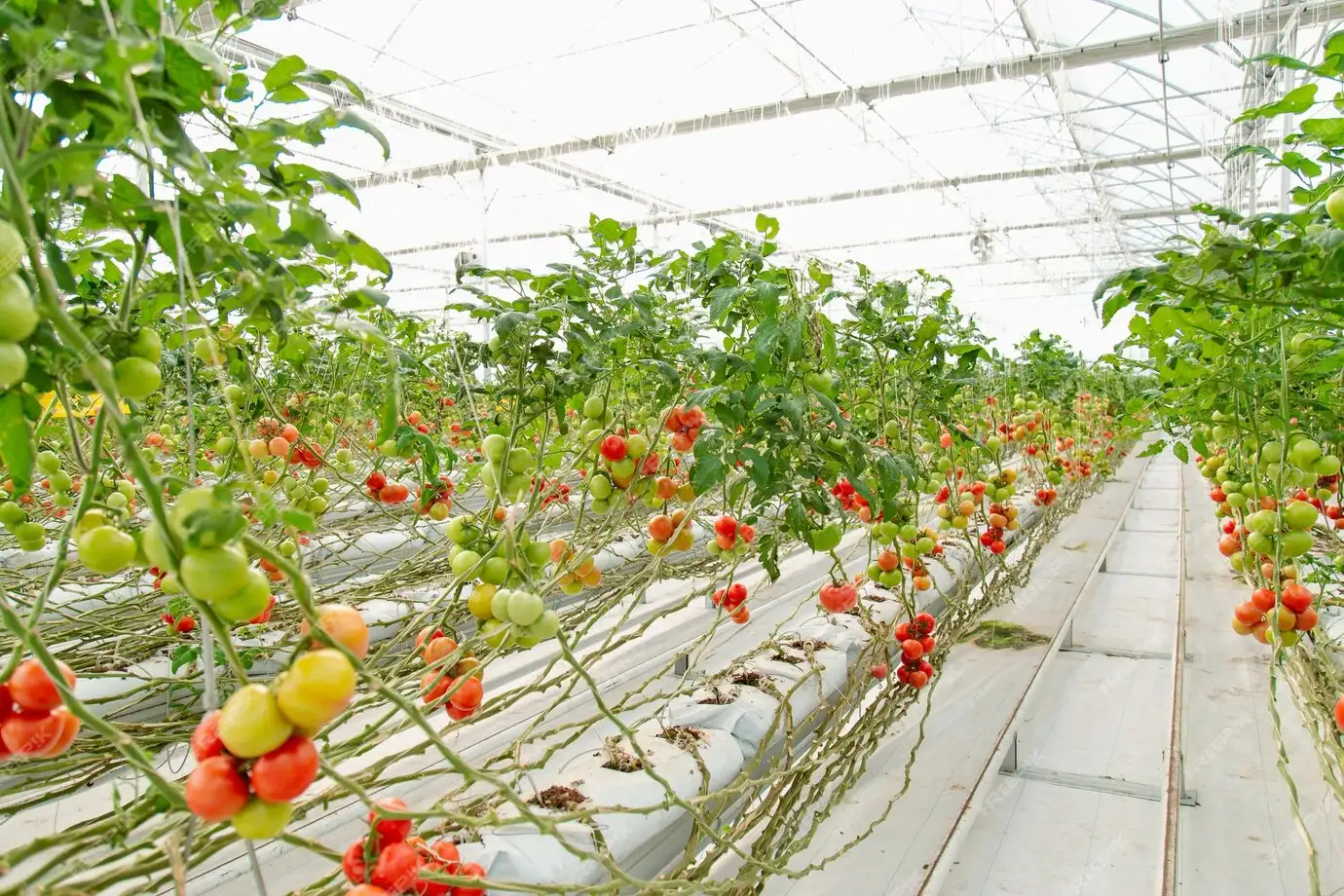 Agro Yield
Agro Yield
09 Jun 2024


10 Jun 2024
Most people think of stocks and bonds when they hear the word “investing.” Some might think of real estate or gold. Fewer think about farms. Yet farms feed every person in the country, and they have done so for hundreds of years. While stock prices can jump up and down each day, farmland values usually move slowly and—over long periods—mostly upward.
This guide is written for someone who knows almost nothing about farming but wants to learn how to add U.S. farmland to a personal investment plan. It covers goals, the main ways to invest, how to study a project, common mistakes to avoid, the role of technology, risk control, taxes, and finally a practical road map for your first step. All ideas are presented in clear, simple language. By the end you will know how to start small, grow knowledge, and put farmland to work in your portfolio.
Before you compare returns or crops, ask yourself what you want from this asset. Goals usually fall into three buckets:
Long‑Term Growth – You want the land’s value to rise so you can sell at a profit in 5–20 years.
Steady Cash Flow – You would like regular payments each month or quarter, like rent checks.
Diversification and Safety – You mainly want an asset that moves differently than the stock market to lower risk.
You can have more than one goal, but write them down. A written goal keeps you focused when a flashy offer tries to distract you.
There are several ways to invest. Each has pros, cons, and typical costs.
Path How It Works Up‑Front Cost Control Level Liquidity Who Should Consider Buy an Entire Farm You purchase land yourself, hire a manager, and pay all bills. Very high ($500k +) Full Low (must sell the property) Hands‑on investors with farm knowledge Buy Shares in a Farm REIT You purchase stock in a public company that owns many farms. Low (as little as $20) Very low High (stock can be sold any day) People who want extreme ease and no direct role Join a Project Platform (like Agro Yield) You buy units in a specific farm project for a set term. Medium ($5k–$100k) Medium (get regular reports) Medium (can sell units on a private board) Investors wanting clear projects plus some liquidityLet’s walk through each choice.
This is the “classic” route. You become a landowner. You hire a farm manager or lease to a local farmer. Pros: maximum control, potential big upside if land in that county booms. Cons: big price tag, big learning curve, and you must handle property taxes, insurance, and repairs.
A REIT (Real Estate Investment Trust) trades on the stock market. You click “buy,” and you own a tiny slice of a nationwide farm portfolio. Pros: you can exit any day. Cons: share price acts like a stock, so day‑to‑day volatility returns. Also, the REIT keeps management fees before paying dividends.
This middle path lets you put $5,000–$100,000 into a single farm project. The term might be 2–5 years. A professional team manages the farm, you receive regular updates, and at the end the land is sold or refinanced. Pros: lower ticket size, direct look at one farm, and no day‑trader volatility. Cons: funds are locked until project exit or a secondary sale.
You do not need an agronomy degree, but you should know five simple points about any farmland deal:
Soil Quality – In the U.S., each county office keeps soil maps with scores. A higher score means better nutrients and usually better crops.
Water Access – Midwest rain‑fed land needs less irrigation cost. Western land with secure water rights can still be great, but rights must be clear in the title.
Crop Type – Corn, soybeans, almonds, lettuce, cattle, and greenhouses all have different cost and price cycles.
Market Access – How far is the farm from grain elevators, dairies, or fresh‑produce packers? Closer means lower trucking cost.
Operator Skill – Even the best soil can flop under poor management. Look for farmers with at least ten years of proven records.
If a project summary does not cover those five basics, ask questions before you send money.
“Due diligence” means, “check the facts carefully.” Here is a simple checklist:
Title Report – Confirms who owns the land and any liens.
Water Rights Report – Shows well permits or irrigation district status.
Soil Tests – Lab results for pH, organic matter, and nutrients.
Historical Yields – Average bushels per acre (corn/soy) or pounds per acre (almonds, berries) over five years.
Budgets – Line‑item costs for seed, fertilizer, labor, water, repairs, insurance.
Sales Contracts – Letters of intent or signed deals with buyers.
Insurance – Copies of crop‑insurance and general‑liability policies.
Platforms like Agro Yield Partners upload these documents to your investor dashboard. Read each file or hire an adviser to review.
Let’s say you have $50,000 ready for alternative assets. You could:
Put $10,000 in a two‑year greenhouse tomato project in Arizona.
Put $15,000 in a four‑year organic blueberry orchard in North Carolina.
Keep $25,000 in cash for a later deal.
Why start small? Because real‑world experience beats any book or blog. After six months of updates, you will know if you like monthly vs. quarterly reports, row crops vs. orchards, or longer vs. shorter deals. Then you can add more.
Some investors think buying one big corn farm is enough. But crops have their own risk cycles. Corn and soy prices move together because they compete for the same ground. Almond prices follow a different path. Lettuce in a greenhouse is yet another track. A simple way to diversify is to own:
One row‑crop project (corn/soy) in the Midwest.
One permanent‑crop project (almonds, pistachios, apples) in California or Washington.
One controlled‑environment project (greenhouse) near big‑city food hubs.
This mix spreads weather, water, and market risk.
Chasing Unrealistic Returns
If someone promises 30 percent per month, walk away. Average annual farm‑asset total returns in the U.S. have ranged 8–12 percent over 30 years, combining cash yield and appreciation.
Ignoring Water Rights
In dry states, water is life. If rights are weak, your crop plan is fragile.
Over‑Leverage
Too much debt looks good in boom years but can wipe equity when prices fall.
Short Exit Expectations
Farmland is not a stock you flip tomorrow. Know the term and accept it.
Not Reading the Operating Agreement
Many new investors skip the legal document that explains fees, exit rules, and voting rights. Read it—or pay a lawyer to read it.
Tech may sound fancy, but the idea is simple: measure more, waste less. Here are some tools you will read about in project briefs:
GPS‑Guided Tractors – Drive in perfect rows, saving fuel and time.
Soil Moisture Sensors – Tell exactly when to irrigate, preventing water waste.
Drones with NDVI Cameras – Spot nutrient stress before human eyes can see it.
Farm Management Software – Tracks every penny of cost and every pound of yield.
Blockchain Traceability – Records harvest and shipping data so grocery buyers pay extra for verified produce.
A farm using these tools often has lower costs and higher yields, improving investor returns. Ask the project manager which tools they use and how those tools keep expenses down.
No investment is risk‑free. Here is how farms manage the big three risks:
Weather Risk
Crop insurance covers drought, hail, and flood.
Diversified crops reduce a single event’s impact.
Price Risk
Forward contracts lock in prices.
Crop diversity buffers commodity swings.
People Risk
Background checks and track records matter.
Third‑party audits review finances and safety.
Platforms like Agro Yield Partners only list projects after they pass internal and external reviews.
Always speak with a tax professional, but know these basics:
Schedule E Income – Rental income can be offset by expenses.
Depreciation – Buildings, irrigation, and even orchard trees depreciate.
Section 179 Deduction – Farmers can expense certain equipment in the first year.
1031 Exchange – Move gains from one farm sale into another to defer taxes.
Platforms often send a K‑1 or 1099 form each year. Keep copies for your tax files.
Agro Yield’s investment committee follows a six‑step funnel:
Initial Filter – Soil, water, crop type, location near markets.
Operator Interview – Meet the farmer or manager in person.
Financial Modeling – Conservative yield and price assumptions.
Legal & Title Review – Third‑party lawyers confirm ownership and rights.
Environmental & Water Study – Verify no hidden contamination or water‑use limits.
Final Vote – Only 1 in 15 reviewed farms make it to the platform.
This vetting saves you time and lowers the chance of a hidden problem.
Meet “Jennifer,” a 38‑year‑old nurse in Ohio with $20,000 she wants to invest outside stocks. She signs up on Agro Yield Partners and does the following:
Puts $10,000 into a two‑year soybean precision‑ag project in Iowa.
Puts $5,000 into a greenhouse lettuce project 40 miles from Chicago.
Keeps $5,000 in a high‑yield savings account for emergencies.
Every month she opens her dashboard:
The soybean project posts drone photos, fertilizer costs, and rainfall data.
The lettuce project shows harvest volumes, wholesale prices, and utility bills.
Each project sends her a small ACH deposit—4 percent annualized so far.
After one year, Jennifer’s projects deliver $780 in cash flow, and her dashboard shows slight land appreciation. She feels confident to add another $5,000 next year.
What is the minimum amount I can invest on the Agro Yield platform?
– Many projects start at $5,000, but check each listing.
How often will I receive payments?
– It depends on the project. Most row‑crop farms pay quarterly; greenhouse projects can pay monthly.
Can I visit the farm?
– Visits are allowed after you reach a certain investment level and follow farm safety rules.
What happens if the crop fails?
– Crop insurance and diversified revenue (like land rent) help reduce the loss.
Are these investments guaranteed?
– No. All investments have risk. Read the offering documents carefully.
Day 1: Open an Account
– Use your full legal name. The platform will verify your identity to comply with U.S. law.
Day 2: Browse Projects
– Take notes on crop, location, return range, and term.
Day 3: Narrow to Three Favorites
– Download the soil report, lease agreement, and financial model for each.
Day 4: Ask Questions
– Email the support team. No question is too small. It is your money.
Day 5: Pick One Project
– Start with an amount you can afford to hold for the full term.
Day 6: Fund the Project
– Wire or ACH from your bank. Receive a confirmation email.
Day 30 and Beyond: Read Monthly Updates
– Log in, read the report, and learn. Knowledge compounds just like capital.
End of Term: Decide
– Reinvest, roll over, or withdraw. Use the experience to guide your next step.
Investing in U.S. farmland is not a get‑rich‑quick scheme. It is a patient, proven way to grow wealth, earn steady income, and reduce overall risk. By setting clear goals, learning the basics, starting small, and diversifying across crops and regions, new investors can join a tradition that feeds the nation and builds long‑term value. Platforms like Agro Yield Partners open doors that were once available only to large farms and institutional funds. With careful homework, smart risk control, and the right tools, you can turn a few acres’ worth of capital into a stable, productive asset that works for you year after year—rain or shine, bull market or bear.
 Your Money
Your Money